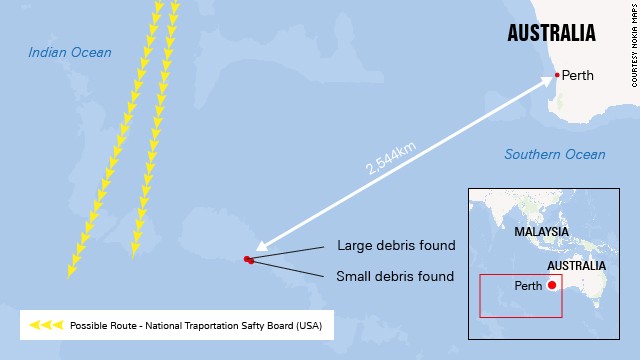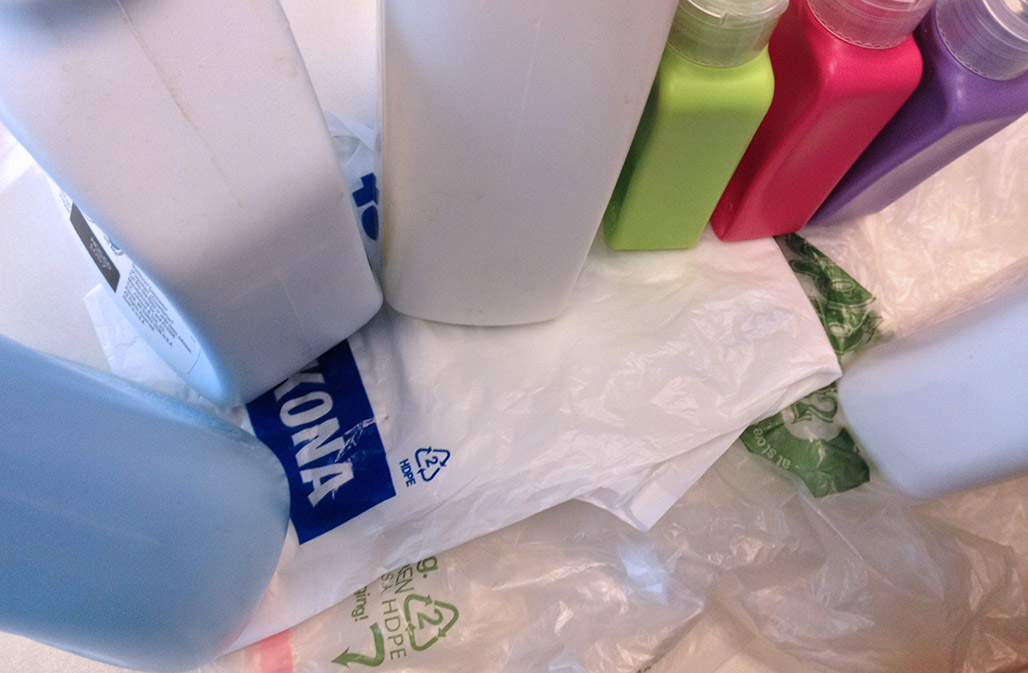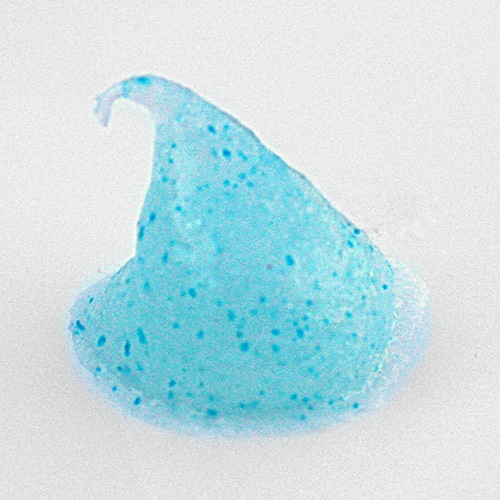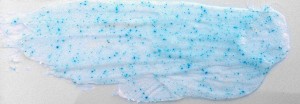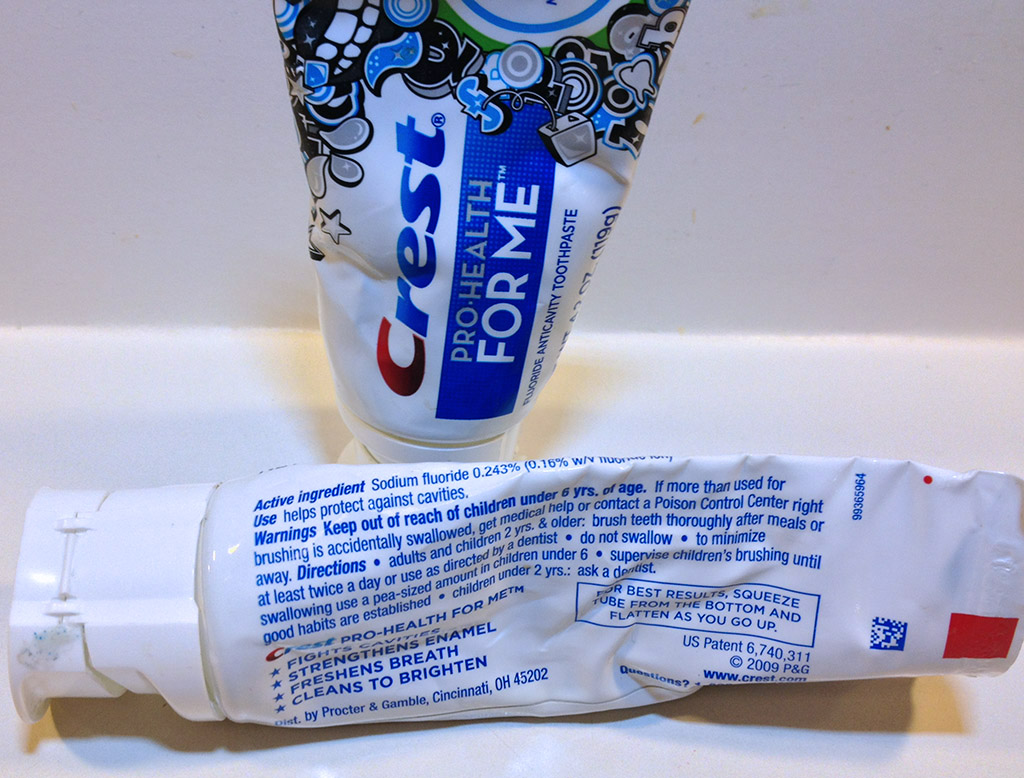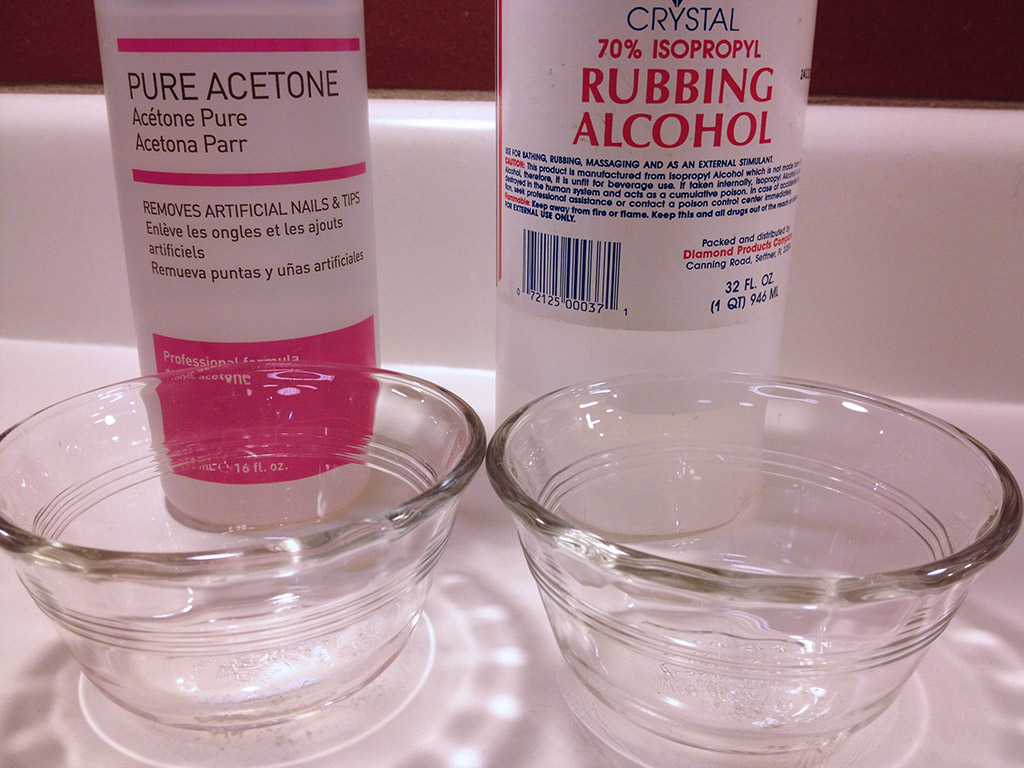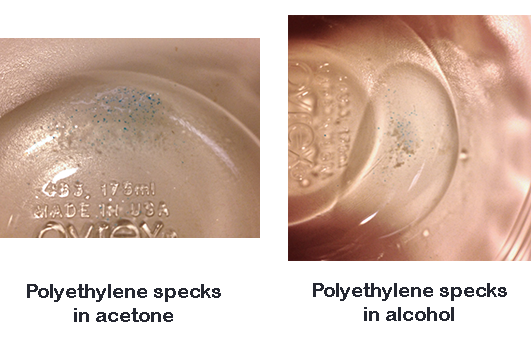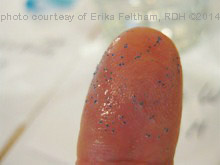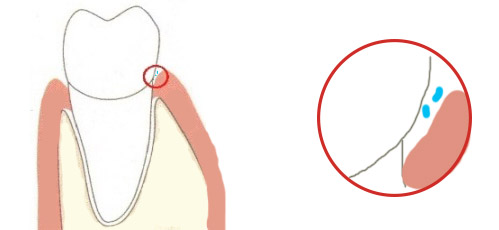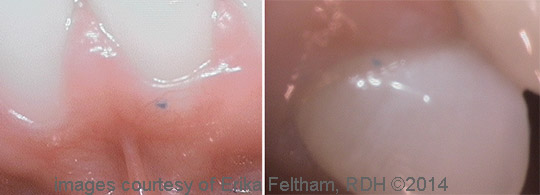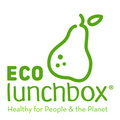
Photographs by Evan Kafka
Update (3/3/14): After this story went to press, the US Food and Drug Administration published a paper
finding that BPA was safe in low doses. However, the underlying testing
was done on a strain of lab rat known as the Charles River Sprague
Dawley, which doesn't readily respond to synthetic estrogens, such as
BPA. And, due to laboratory contamination, all of the animals—including
the control group—were exposed to this chemical. Academic scientists say
this raises serious questions about the study's credibility. Stay tuned
for more in-depth reporting on the shortcomings of the FDA's most
recent study.
Each night at dinnertime, a
familiar ritual played out in Michael Green's home: He'd slide a
stainless steel sippy cup across the table to his two-year-old daughter,
Juliette, and she'd howl for the pink plastic one. Often, Green gave
in. But he had a nagging feeling. As an environmental-health advocate,
he had fought to rid sippy cups and baby bottles of the common plastic
additive bisphenol A (BPA), which mimics the hormone estrogen and has
been linked to a long list of serious health problems. Juliette's sippy
cup was made from a new generation of BPA-free plastics, but Green, who
runs the Oakland, California-based Center for Environmental Health, had
come across research suggesting some of these contained synthetic
estrogens, too.
He pondered these findings as the center prepared for its anniversary
celebration in October 2011. That evening, Green, a slight man with
scruffy blond hair and pale-blue eyes, took the stage and set Juliette's
sippy cups on the podium.
He recounted their nightly standoffs.
"When she wins…every time I worry about what are the health impacts of
the chemicals leaching out of that sippy cup," he said, before listing
some of the problems linked to those chemicals—cancer, diabetes,
obesity. To help solve the riddle, he said, his organization planned to
test BPA-free sippy cups for estrogenlike chemicals.
The center shipped Juliette's plastic cup, along with 17 others purchased from Target, Walmart, and Babies R Us, to
CertiChem,
a lab in Austin, Texas. More than a quarter—including Juliette's—came
back positive for estrogenic activity. These results mirrored the lab's
findings in its broader National Institutes of Health-funded research on
BPA-free plastics. CertiChem and its founder,
George Bittner, who is also a professor of neurobiology at the University of Texas-Austin, had
recently coauthored a paper in the NIH journal
Environmental Health Perspectives.
It
reported
that "almost all" commercially available plastics that were tested
leached synthetic estrogens—even when they weren't exposed to conditions
known to unlock potentially harmful chemicals, such as the heat of a
microwave, the steam of a dishwasher, or the sun's ultraviolet rays.
According to Bittner's research, some BPA-free products actually
released synthetic estrogens that were
more potent than BPA.
Estrogen
plays a key role in everything from bone growth to ovulation to heart
function. Too much or too little, particularly in utero or during early
childhood, can alter brain and organ development, leading to disease
later in life. Elevated estrogen levels generally increase a woman's
risk of breast cancer.
Estrogenic chemicals found in many common products have been linked
to a litany of problems in humans and animals. According to one study,
the pesticide atrazine can turn male frogs female. DES, which was once
prescribed to prevent miscarriages, caused obesity, rare vaginal tumors,
infertility, and testicular growths among those exposed in utero.
Scientists have tied BPA to ailments including asthma, cancer,
infertility, low sperm count, genital deformity, heart disease, liver
problems, and ADHD. "Pick a disease, literally pick a disease," says
Frederick vom Saal, a biology professor at the University of Missouri-Columbia who studies BPA.
BPA exploded into the headlines in 2008, when stories about "toxic baby bottles" and "poison" packaging became ubiquitous.
Good Morning America issued a "consumer alert."
The New York Times urged Congress to ban BPA in baby products. Sen. Dianne Feinstein (D-Calif.)
warned in the Huffington Post
that "millions of infants are exposed to dangerous chemicals hiding in
plain view." Concerned parents purged their pantries of plastic
containers, and retailers such as Walmart and Babies R Us started
pulling bottles and sippy cups from shelves. Bills banning BPA in infant
care items began to crop up in states around the country.
Today many plastic products, from sippy cups and blenders to
Tupperware containers, are marketed as BPA-free. But Bittner's
findings—some of which have been confirmed by other scientists—suggest
that many of these alternatives share the qualities that make BPA so
potentially harmful.
Those startling results set off a bitter fight with the
$375-billion-a-year plastics industry.
The American Chemistry Council,
which lobbies for plastics makers and has sought to refute the science
linking BPA to health problems, has teamed up with
Tennessee-based Eastman Chemical—the
maker of Tritan, a widely used plastic marketed as being free of
estrogenic activity—in a campaign to discredit Bittner and his research.
The company has gone so far as to tell corporate customers that the
Environmental Protection Agency (EPA) rejected Bittner's testing
methods. (It hasn't.) Eastman also sued CertiChem and its sister
company, PlastiPure, to prevent them from publicizing their findings
that Tritan is estrogenic, convincing a jury that its product displayed
no estrogenic activity. And it launched a PR blitz touting Tritan's
safety, targeting the group most vulnerable to synthetic estrogens:
families with young children.
"It can be difficult for
consumers to tell what is really safe," the vice president of Eastman's
specialty plastics division, Lucian Boldea,
said in one web video,
before an image of a pregnant woman flickered across the screen. With
Tritan, he added, "consumers can feel confident that the material used
in their products is free of estrogenic activity."
"A poison kills you," says biology
professor Frederick vom Saal. "A chemical like BPA reprograms your cells
and ends up causing a disease in your grandchild that kills him."
Eastman's offensive is just the latest in a wide-ranging industry
campaign to cast doubt on the potential dangers of plastics in food
containers, packaging, and toys—a campaign that closely resembles the
methods Big Tobacco used to stifle scientific evidence about the dangers
of smoking. Indeed, in many cases, the plastics and chemical industries
have relied on the same scientists and consultants who defended Big
Tobacco.
These efforts, detailed in internal industry documents revealed
during Bittner's legal battle with Eastman, have sown public confusion
and stymied US regulation, even as BPA bans have sprung up elsewhere in
the world. They have also squelched debate about the safety of plastics
more generally. All the while, evidence is mounting that the products so
prevalent in our daily lives may be leaching toxic chemicals into our
bodies, with consequences affecting not just us, but many generations to
come.
The fight over the safety of plastics traces back to 1987, when Theo Colborn, a
60-year-old grandmother with a recent Ph.D. in zoology,
was hired to investigate mysterious health problems in wildlife around
the Great Lakes.
Working for the Washington, DC-based Conservation
Foundation (now part of the World Wildlife Fund), she began collecting
research papers. Before long, her tiny office was stacked floor to
ceiling with cardboard boxes of studies detailing a bewildering array of
maladies—cancer, shrunken sexual organs, plummeting fertility, immune
suppression, birds born with crossed beaks and missing eyes. Some
species also suffered from a bizarre syndrome that caused seemingly
healthy chicks to waste away and die.
While the afflictions and species varied widely, Colborn eventually
realized they had two factors in common: The young were hardest hit,
and, in one way or another, all of the animals' symptoms were linked to
the endocrine system, the network of glands that controls growth,
metabolism, and brain function, with hormones as its chemical
messengers. The system also plays a key role in fetal development.
Colborn suspected that synthetic hormones in pesticides, plastics, and
other products acted as "hand-me-down poisons," with parents' exposure
causing affliction in their offspring.
Initially, her colleagues were
skeptical. But Colborn collected data and tissue samples from far-flung
wildlife populations and unearthed previously overlooked studies that
supported her theory. By 1996, when Colborn copublished her landmark
book
Our Stolen Future, she
had won over many skeptics. Based partly on her research, Congress
passed a law that year requiring the EPA to screen some 80,000
chemicals—most of which had never undergone any type of safety
testing—for endocrine-disrupting effects and report back by 2000.
Around this time, the University of Missouri's vom Saal, a garrulous
biologist who previously worked as a bush pilot in Kenya, began studying
the effects of synthetic estrogens on fetal mouse development.
The
first substance he tested was BPA, a chemical used in clear, hard
plastics, particularly the variety known as polycarbonate, to make them
more flexible and durable. (It's also found in everyday items, from
dental sealants and hospital blood bags to cash register receipts and
the lining of tin cans.) Naturally occurring estrogens bind with
proteins in the blood, limiting the amount that reaches estrogen
receptors. But vom Saal found this wasn't true of BPA, which bypassed
the body's natural barrier system and burrowed deep into the cells of
laboratory mice.
Vom Saal suspected this would make BPA "a hell of a lot more potent" in small doses. Working with colleagues Susan Nagel and
Wade Welshons,
a professor of veterinary biology, he began testing the effects of BPA
at amounts 25 times lower than the EPA's safety threshold.
In the late
1990s, they published two studies finding that male mice whose mothers
were exposed to these low doses during pregnancy had enlarged prostates
and low sperm counts. Even in microscopic quantities, it seemed, BPA
could cause the kinds of dire health problems Colborn had found in
wildlife. Before long, other scientists began turning up ailments among
animals exposed to minute doses of BPA.
These findings posed a direct threat to plastics and chemical makers,
which fought back using tactics the tobacco makers had refined to an
art form. By the late 1990s, when tobacco companies agreed to drop
deceptive marketing practices under a settlement agreement with 46
states, many of the scientists and consultants on the industry's payroll
transitioned seamlessly into defending BPA.
Plastics and chemical interests worked closely with the Weinberg Group, which had run
Big Tobacco's White Coat Project—an
effort to recruit scientists to create doubt about the health effects
of secondhand smoke.
Soon Weinberg, which bills itself as a "product
defense" firm, was churning out white papers and lobbying regulators. It
also underwrote a trade group with its own scientific journal,
Regulatory Toxicology and Pharmacology, which published studies finding BPA was safe.
The industry also worked hand in glove with the Harvard Center for
Risk Analysis, a think tank affiliated with the university's school of
public health that has a history of accepting donations from
corporations and then publishing research favorable to their products.
In the early 1990s, its founder, John D. Graham—who was later tapped as
George W. Bush's regulatory czar—
lobbied to quash an EPA finding that secondhand smoke caused lung cancer, while soliciting large contributions from Philip Morris.
In 2001, as studies on BPA stacked up, the American Chemistry Council
enlisted the center to convene a panel of scientists to investigate
low-dose BPA. The center paid panelists $12,000 to attend three
meetings,
according to Fast Company.
Their final report, released in 2004, drew on just a few
industry-favored studies and concluded that the evidence that low-dose
BPA exposure harmed human health was "very weak."
By this point, roughly
100 studies on low-dose BPA were in circulation. Not a single
industry-funded study
found it harmful,
but 90 percent of those by government-funded scientists discovered
dramatic effects, ranging from an increased breast cancer risk to
hyperactivity. Four of the 12 panelists later insisted the center scrub
their names from the report because of questions about its accuracy.
Chemical interests, meanwhile, forged deep inroads with the Bush
administration, allowing them to covertly steer the regulatory process.
For decades, the Food and Drug Administration has assured lawmakers and
the public that BPA is safe in low doses. But
a 2008 investigation by the Milwaukee Journal Sentinel
revealed that the agency had relied on industry lobbyists to track and
evaluate BPA research, and had based its safety assessment largely on
two industry-funded studies—one of which had never been published or
peer reviewed.
The panel the EPA appointed to develop guidelines for its
congressionally mandated endocrine disruptor screening was also stocked
with industry-backed scientists. It included Chris Borgert, a toxicology
consultant who had worked closely with Philip Morris to discredit EPA
research on secondhand smoke. He later served as the president of the
International Society of Regulatory Toxicology and Pharmacology, the
Weinberg Group-sponsored outfit, which met in the offices of a plastics
lobbyist.
Members of the EPA panel say Borgert seemed determined to sandbag the
process. "He was always delaying, always trying to confuse the issue,"
recalls one participant. And the screening approach the EPA settled on
came straight from the industry's playbook. Among other things, the
chemicals would be tested on a type of rat known as the Charles River
Sprague Dawley—which, oddly, doesn't respond to synthetic hormones like
BPA.
"Like the tobacco companies, they want to
set up a standard of proof that is unreachable," says Stanton Glantz.
"If they set the standard of proof, they've won the fight."
How best to test for estrogenic activity would become a key front in
the fight over plastic safety. The American Chemistry Council joined
forces with an unlikely ally, PETA, to fight large-scale chemical-safety
testing on animals.
At the same time, Borgert and other industry-funded
scientists made the case that the other common method for testing—using
cells that respond in the presence of estrogen—did not necessarily tell
us how a substance would affect animals or humans. In fact, a massive,
ongoing NIH-run study has found that cell-based tests track closely with
animal studies, which have accurately predicted the effects of
synthetic estrogens, particularly DES and BPA, on humans.
Stanton Glantz, who directs the Center for Tobacco Control Research
and Education at the University of California-San Francisco, argues the
chemical industry's real aim in challenging specific testing methods is
to undermine safety testing altogether. "Like the tobacco companies,
they want to set up a standard of proof that is unreachable," he says.
"If they set the standard of proof, they've won the fight."
During the height of the battle
over BPA, vom Saal periodically traveled to Texas and huddled around the
dining table with his old friend George Bittner, whose home overlooks a
walnut grove on the outskirts of Austin. Bittner, who holds a Ph.D. in
neuroscience from Stanford, is quirky and irascible.
But he has a
brilliant mind for science and an interest in applying it to real-world
problems—in his lab at UT-Austin, he had developed a nerve-regeneration
technique that had helped crippled rats walk within days. And he had
taken a keen interest in vom Saal's research on endocrine disruption.
"It struck me as the most important public health issue of our time,"
Bittner told me when we met at his lab. "These chemicals have been
correlated with so many adverse effects in animal studies, and they're
so pervasive. The potential implications for human health boggle the
mind."
In the late 1990s, Bittner—a squat, ruddy man with thinning red hair
and Napoleon Dynamite glasses who had made a tidy sum investing in real
estate and commodities—began mulling the idea of launching a private
company that worked with manufacturers and public health organizations
to test products for endocrine disruptors. He believed this approach
could help raise awareness and break the regulatory logjam—while also
reaping a profit.
In 2002, armed with a $91,000 grant from the National Institutes of
Health, Bittner launched a pair of companies: CertiChem, to test
plastics and other products for synthetic estrogens, and PlastiPure, to
find or develop nonestrogenic alternatives. Bittner then enlisted
Welshons to design a special test using a line of breast cancer cells,
which multiply rapidly in the presence of estrogen. It features a
robotic arm, which is far more precise than a human hand in handling
microscopic material.

But before long Bittner began butting heads with Welshons and vom
Saal. Bittner wanted the researchers to sign over the rights to the test
Welshons had developed, while they insisted it belonged to the
University of Missouri. Eventually, they had a bitter falling out.
Welshons and vom Saal filed a complaint with the NIH, alleging that
Bittner had misrepresented data from Welshons' lab in a brochure.
(Bittner maintains that he merely excluded data from contaminated
samples; the institute found no evidence of wrongdoing.)
Bittner,
meanwhile, enlisted
V. Craig Jordan,
a pharmacology professor at Georgetown University with an expertise in
hormones—he discovered a now-common hormone therapy that blocks the
spread of breast cancer—to refine the testing protocol. By 2005, Bittner
had opened a commercial lab in a leafy office park in Austin. He
managed to attract some big-name clients, including Whole Foods, which
hired CertiChem to advise it on endocrine-disrupting chemicals and test
some of its products.
At this point, BPA was among the most studied chemicals on the
planet. In November 2006, vom Saal and a top official at the National
Institute of Environmental Health Sciences convened a group of 38
leading researchers from various disciplines to evaluate the 700-plus
existing studies on the subject.
The group later issued a "
consensus statement"
that laid out some chilling conclusions: More than 95 percent of people
in developed countries were exposed to levels of BPA that are "within
the range" associated with health problems in animals, from cancer and
insulin-resistant diabetes to early puberty. The scientists also found
that there was "great cause for concern with regard to the potential for
similar adverse effects in humans," especially given the steep uptick
in these same disorders.
At the same time, a new body of research was finding that BPA altered
animals' genes in ways that caused disease. For instance, it could
switch off a gene that suppresses tumor growth, allowing cancer to
spread. These genetic changes were passed down across generations. "A
poison kills you," vom Saal explains. "A chemical like BPA reprograms
your cells and ends up causing a disease in your grandchild that kills
him."
